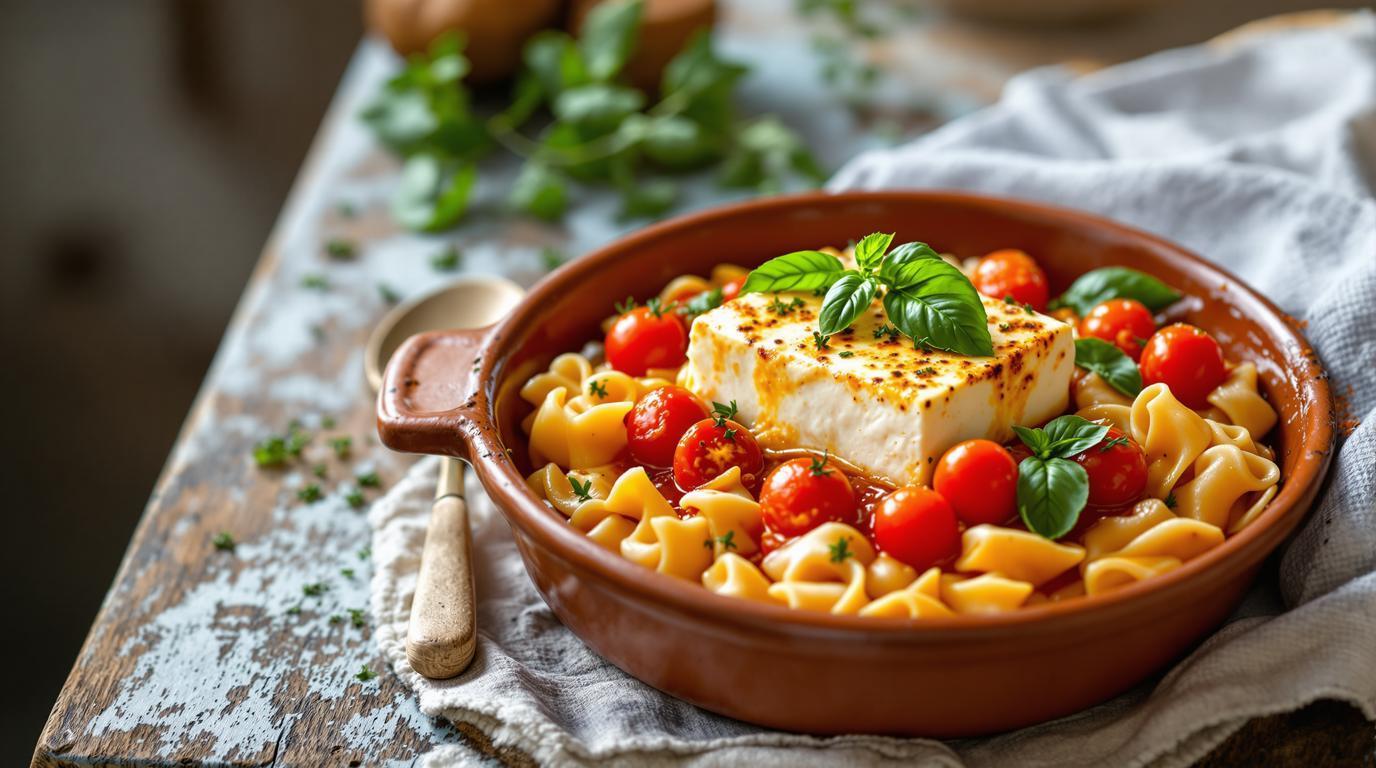I’ll never forget the first time I encountered baked feta pasta in a tiny seaside restaurant outside Athens. The chef, a woman with hands weathered from decades of cooking, placed a terracotta dish in front of me with a wink. “This is not ancient,” she confessed, “but it captures everything we love about our cooking.” She was right – while this dish may have exploded on social media in recent years, its soul is deeply Mediterranean, celebrating the beautiful marriage of quality ingredients with minimal fuss. What makes our 2025 edition special is the balance of tradition with thoughtful modern touches that elevate without complicating.
The Mediterranean Magic of Baked Feta Pasta 🫒
This dish beautifully bridges Greek and Italian culinary traditions. The Greeks have cherished feta for millennia, while Italians perfected the art of pasta and tomato cookery. Together, they create something greater than the sum of their parts – a dish that tastes like it’s been perfected over generations, even though it’s relatively new to our tables.
What separates an ordinary version from an extraordinary one? It’s all in how the feta transforms. When baked properly, it doesn’t just melt – it develops a complex creaminess with slightly browned edges that add depth you simply can’t get from stirring crumbled feta into a sauce.
Essential Ingredients 🧀 🍅
- 1 block (8 oz/225g) high-quality feta in brine
- 2 pints (4 cups/600g) cherry or grape tomatoes
- 4 large garlic cloves, thinly sliced
- ½ cup (120ml) extra virgin olive oil, divided
- 3 fresh thyme sprigs (or 2 tsp dried)
- 10 oz (280g) rigatoni or penne pasta
- ½ tsp red pepper flakes (optional)
- Sea salt and freshly ground black pepper
- Fresh basil leaves, for garnish
Step-by-Step Instructions 📝
- Preheat your oven to 400°F (200°C). This temperature is crucial – too low and you won’t get proper caramelization; too high and the feta will dry out.
- Prepare the tomato base. In a 9×13 inch (23×33cm) baking dish, combine tomatoes, sliced garlic, ¼ cup olive oil, a generous pinch of salt, and pepper flakes if using. Toss until evenly coated.
- Create space for the feta. Push the tomatoes toward the sides to create a well in the center. Place the whole block of feta in this space. Drizzle remaining ¼ cup olive oil over the feta and scatter thyme sprigs around.
- Bake until transformed, about 40-45 minutes. The tomatoes should be bursting, and the feta should develop a light golden hue on top while remaining creamy inside.
- Meanwhile, cook pasta in heavily salted water until al dente, about 1 minute less than package directions. Before draining, reserve ½ cup of the starchy pasta water.
- Create the magical sauce. Remove the baking dish from the oven and let rest for 5 minutes (a chef’s secret for easier mixing). Gently mash the feta and burst tomatoes with a fork, creating a creamy, rustic sauce.
- Marry the elements. Add the drained pasta directly to the baking dish and toss gently. If the sauce seems too thick, add reserved pasta water a tablespoon at a time until it reaches a silky consistency that clings to the pasta.
Chef’s Note: The key to extraordinary baked feta pasta lies in patience. That full 40-minute bake allows the tomatoes to release their juices and the feta to develop complexity that simply doesn’t happen with shorter cooking times. This transformation is what makes the dish special – don’t rush it!
Regional Variations & Modern Twists 🌍
For a Greek-inspired version, add ⅓ cup halved Kalamata olives and a handful of baby spinach just after baking. For an Italian twist, finish with torn fresh basil and a splash of good balsamic vinegar. My 2025 edition includes lemon zest stirred in at the end – a bright note that balances the richness perfectly.
Serving & Pairing 🍷
Serve this gorgeous creation with a simple green salad dressed with lemon juice and olive oil. For wine, reach for a crisp Greek Assyrtiko or Italian Pinot Grigio that cuts through the richness. This dish pairs beautifully with herb-infused cocktails too – the botanical notes complement the Mediterranean flavors.
For a complete Mediterranean feast, start with vibrant veggie wraps and finish with honey-kissed grilled peaches. Or, keep it simple with frozen banana bites for a light sweet finish.
What I love most about this dish is how it embodies the Mediterranean philosophy of cooking – respect your ingredients, keep techniques simple, and let natural flavors shine. In professional kitchens, we often complicate things unnecessarily. Sometimes, the most satisfying dishes are those that remind us of the fundamental joy of good ingredients treated with care. This baked feta pasta does exactly that, and I hope it brings as much comfort to your table as it has to mine over the years.
